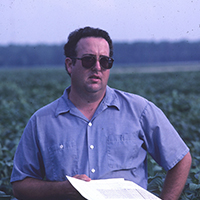
Clemson University
SCN is important in South Carolina because:
• It is present in all of our soybean growing counties
• SCN often causes 10 to 25% yield losses in individual fields
• SCN occurs with mixed populations of other nematode species that affect soybean
• The resistance genes present in soybean will only control one specific nematode species
You must know if you have SCN, root-knot, or reniform nematode to choose the proper variety with resistance.
SCN Management Recommendations
There are multiple tactics for managing SCN:
- Rotation to nonhost crops
- Use of resistant varieties
- Use of seed treatment or in-furrow nematicides
Clemson University Experts


